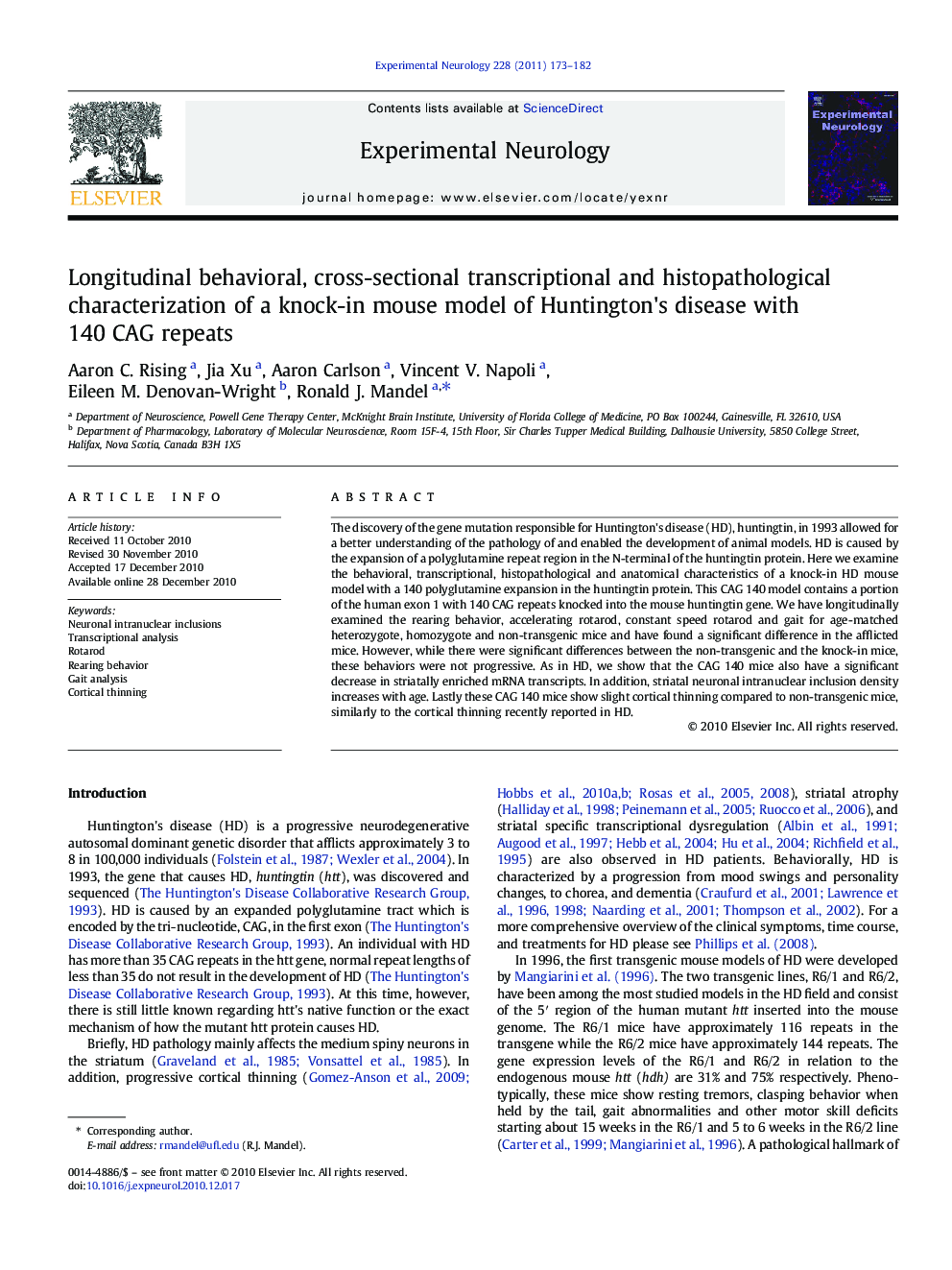| Article ID | Journal | Published Year | Pages | File Type |
|---|---|---|---|---|
| 3055891 | Experimental Neurology | 2011 | 10 Pages |
The discovery of the gene mutation responsible for Huntington's disease (HD), huntingtin, in 1993 allowed for a better understanding of the pathology of and enabled the development of animal models. HD is caused by the expansion of a polyglutamine repeat region in the N-terminal of the huntingtin protein. Here we examine the behavioral, transcriptional, histopathological and anatomical characteristics of a knock-in HD mouse model with a 140 polyglutamine expansion in the huntingtin protein. This CAG 140 model contains a portion of the human exon 1 with 140 CAG repeats knocked into the mouse huntingtin gene. We have longitudinally examined the rearing behavior, accelerating rotarod, constant speed rotarod and gait for age-matched heterozygote, homozygote and non-transgenic mice and have found a significant difference in the afflicted mice. However, while there were significant differences between the non-transgenic and the knock-in mice, these behaviors were not progressive. As in HD, we show that the CAG 140 mice also have a significant decrease in striatally enriched mRNA transcripts. In addition, striatal neuronal intranuclear inclusion density increases with age. Lastly these CAG 140 mice show slight cortical thinning compared to non-transgenic mice, similarly to the cortical thinning recently reported in HD.
Research Highlights► Longitudinal behavioral analysis of CAG 140 HD mice reveals a rearing deficit. ► Accelerating rotarod deficits appear at about 11 months of age in CAG 140 mice. ► Striatal specific transcripts decline progressively starting at 6 months of age. ► NIIs appear at 6 months and progressively become more dense over time. ► The cerebral cortex of the CAG 140 mouse thins earlier than in non-transgenic mice.
